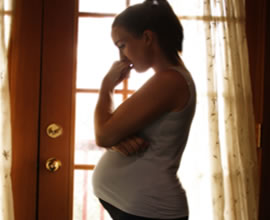Pregnancy Fertility
One in ten couples are childless. The causes of infertility are:
- 35% are due to male fertility problems
- 35% are due to female fertility problems
- 30% are due to both male and female fertility problems
Pregnancy fertility is not an issue for 9 out of 10 couples who become pregnant within a year of trying, the other 10% of couples are those that may have some fertility issues.
Despite lots of research into the subject of infertility, the success rate for fertility treatment is about 40%.
Causes of Infertility
Male Fertility Issues
- No Sperm or insufficient sperm being produced by the man. The testicles may be injured or diseased.
- The scrotum is being kept too hot. If the scrotum sac is kept at a temperature higher than normal this reduces the sperm’s effectiveness. So stop wearing athletic, tight fitting underwear as this will raise the temperature.
- Excessive drinking of alcohol will diminish the sperm count
- The passageway carrying the sperm may be blocked.
- The sperm may be unable to swim due to disease of the man’s prostrate gland
Women Fertility Issues
- A single egg needs to be produced by the ovary twelve to fourteen days before the women’s next menstrual period
- The Fallopian tubes must be healthy so the eggs can move towards the uterus
- The lining of the womb must be prepared for receiving the fertilized egg can implant itself and grow
- The neck of the womb must not be a barrier to the sperm being able to swim to the egg
Investigating the Causes of Infertility
For most couples that have not become pregnant after one year, the first investigation into their fertility is with their first initial consultation with their Doctor.
The first Doctor’s Interview
- History of any injury or disease of the man’s testicles.
- Drinking habits
- The use of drugs
- The Doctor will also exam the man’s testicles and penis
- The Doctor will want to know about the woman’s periods, any pain, if there are problems with the menstrual cycle, irregularity
- The timing and frequency of sexual intercourse is important. To become pregnant, sexual intercourse must take place two weeks before the next period
- The Doctor will give the woman a general examination to make sure that there are not obvious causes of infertility. The Doctor will look for signs of any cysts on the ovary, or lumps called fibroids which can cause problems conceiving.
Fertility Tests
Male Fertility Tests
- Semen Analysis – A specimen of sperm is examined, sex needs to be avoided for at least two days before providing the specimen, and then the specimen needs to be kept at room temperature and given to the laboratory within six to eight hours
- Post-coital Test – this is testing the efficiency of sperm. The woman needs to be examined within twelve hours of having unprotected sex, so that a fresh quantity of sperm deposited into the vagina can be examined. A sample is taken and viewed under a microscope to see how active and mobile they are. The Doctor wants to see if they are good swimmers or if they cannot swim through the cervix. The test is carried out midway through the female cycle so it occurs at the maximum time of fertility.
Female Fertility Tests
- Ovulation – testing for ovulation can be done by recording the woman’s temperature on waking up. The temperature in the first twelve to fourteen days of the menstrual cycle is constant, but after ovulation the temperature drops by a rise for the remainder of the menstrual cycle. The temperature change is due to the hormone released by the ovary. Alternatively a blood test can be done at twenty one days in the cycle.
- Tests on the Fallopian Tubes – The fallopian tubes are critical to women’s fertility. The fallopian tubes need to be able to suck the egg from the ovary so that it can pass down the canal and can be fertilized where it then goes to the uterus where it grows. So the fallopian tubes cannot be blocked or diseased. Both methods for testing involve the injection of a dye and then either using a X ray or visual inspection. You only need one fallopian tube to be open and functioning properly to be fertile.

